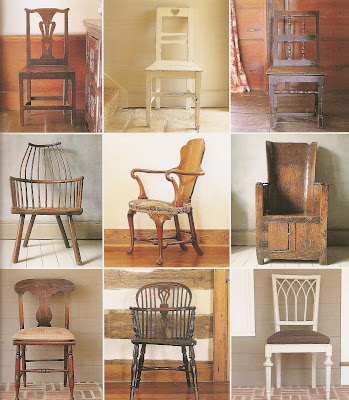The late and still lamented Gourmet magazine was known not only for its recipes, opinionated columnists and travel articles but also as one of
the best places to see exquisite table settings with breathtaking ingredients. I'm not talking food here, I'm talking about the equipment, if you will, that people have learned to use over the centuries and which has been further refined into distinct catagories such as stainless steel or sterling flatware; table cloths/place mats/napkins made of every conceivable type of fabric from the finest double linen to 100% polyester; water and wine glassware that can be the finest crystal or Libby glass from Home Hardware; and then we can get into the relative merits of tableware such as Porcelain or China or ironstone services. That's what I'm talking about - the ingredients that seduce us into being glad that we were invited for dinner and which elicit that first dazzled expression of "ooh! ah!"
Floral arrangements are always part of the equation: they should always be kept as low as possible for people to see each other, and placing more that just the expected twin candle holders (with their candles) is unbelievably important too; candlesticks help by their shape, what they are made of - metal or plastic or glass - to define the overall style of the table scape. Other accessories can add a dressiness to a table scape: silver birds, for instance (much smaller than life size) marks the owner of the table scape as being sophisticated in a country-house sort of way, or as seen in one of Gourmet magazine's table setting pictures - a miniature birch bark canoe or two - placed at random - suggests youthful exuberance.
Many of the glittering ingredients of the Gourmet table settings in these pictures were borrowed from both fashionable antique stores and private collections in New York to greatly enhance the Luxe look of a Gourmet table top.
One of the ingredients that I discovered I consistently felt drawn to was the use of lace tablecloths!
I used to dismiss lace tablecloths as meagre stopgaps until a table was put to a better use. But, the pictures below show lace tablecloths underpinning sumptuous table settings. I understand now that they are definitely not just hanging around waiting to be whisked out of sight.
Here are some of my (surprising) favourites:
I love the lace tablecloth underneath those matching chargers and what look like shallow rim soups - exquisite!
Impressive Imari, the pattern which suggests oriental porcelain; in this case it is patterned and coloured Mason's Ironstone Imari dinner plates. They are exceptional. I wish that they were still being made. Sigh. The other interesting thing about this picture are the Gothic-style chairs. I am a big fan of Gothic style of furnishings with its slightly ecclesiastical, cathedral look.

In the above photograph of the place setting, the lace table cloth is paired with a lavender coloured under cloth which beautifully compliments the lovely lavender on white Spode/Royal Worcester china plates. This pattern is from their "Wild Flower" series. Two of the other amazing-to-me items include several examples of handmade sterling flatware, called "Quirinale"; and the "Paris" pattern of crystal water goblets and wineglasses from Baccarat, Inc. I had never seen the "Paris" pattern of crystal before Gourmet used it in this part product advertisement, part educational experience for fans of table scapes. Stunning!
It may be time for me to expend some energy and find myself a lace tablecloth to go with my own Mason's Ironstone pattern - which is Vista Pink. I love it and wish that I had more - much more of it.
Just one more lace tablecloth: above. This is a fantasy picnic for sure, but a formal fantasy.
Great photograph too.
Best of Gourmet; 1989 and 1992. Canadian Guide to Home Entertaining, 1975. Photography by Fred Bird.































